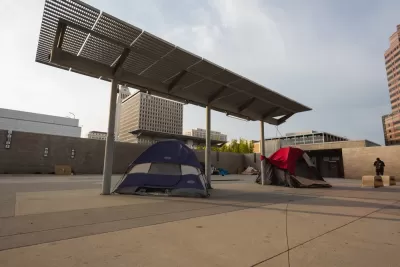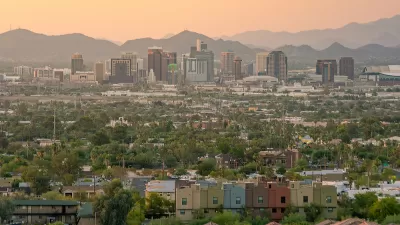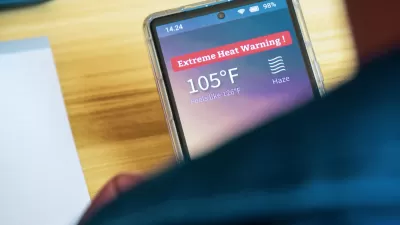Extreme heat events like the ‘heat dome’ that baked Southern California last summer kill a disproportionate number of people experiencing homelessness, who have fewer resources to protect themselves from the scorching sun.

Extreme heat waves are responsible for a growing number of deaths among unhoused people in Los Angeles, reports Summer Lin in the Los Angeles Times. “Although the unhoused population represents about 70,000 of Los Angeles County’s more than 9.8 million people, they accounted for nearly half — 5 in 12 — of deaths from heat illness or heat exposure last year, according to data from the coroner’s office.”
As Lin explains, “Heat-related illness and death are “notoriously” undercounted because patients in emergency rooms are frequently diagnosed with other medical conditions, such as dehydration and kidney failure, without any mention of their high temperatures and exposure to heat, according to David Eisenman, a professor specializing in climate change at the UCLA Fielding School of Public Health.”
Larry Kalkstein, the president of Applied Climatologists, estimates that up to 2,000 people die of heat-related causes every year, which would make heat deadlier than hurricanes, tornadoes, and snowstorms. This number will only rise as climate change causes longer and more severe heat waves, and unhoused people face some of the highest risks.
“More than a quarter of the lives lost during heat waves could have been saved if cities implemented measures to provide tree canopy, vegetation and reflective materials in roofing, sidewalks and other infrastructure, according to a March 2022 article co-written by [UCLA researcher Edith De Guzman].” In addition to these measures, cities can make more cooling centers available to all residents, so unhoused people don’t have to rely on private businesses that may be hostile to them.
FULL STORY: Heat waves are killing more L.A. homeless people

Planetizen Federal Action Tracker
A weekly monitor of how Trump’s orders and actions are impacting planners and planning in America.

Congressman Proposes Bill to Rename DC Metro “Trump Train”
The Make Autorail Great Again Act would withhold federal funding to the system until the Washington Metropolitan Area Transit Authority (WMATA), rebrands as the Washington Metropolitan Authority for Greater Access (WMAGA).

DARTSpace Platform Streamlines Dallas TOD Application Process
The Dallas transit agency hopes a shorter permitting timeline will boost transit-oriented development around rail stations.

San Francisco's School District Spent $105M To Build Affordable Housing for Teachers — And That's Just the Beginning
SFUSD joins a growing list of school districts using their land holdings to address housing affordability challenges faced by their own employees.

Car-Centric LA Suburb Looks to a Train-Oriented Future
City leaders in Rancho Cucamonga, the future western terminus of the Brightline West rail line to Las Vegas, want to reimagine the city as a transit-oriented, pedestrian-friendly community.

New Alaska Bitcoin Mine Would Burn as Much Energy as the State’s Largest Coal Plant
Fueled by “stranded” natural gas, the startup hopes to become the largest in the US, and to make Alaska an industry center.
Urban Design for Planners 1: Software Tools
This six-course series explores essential urban design concepts using open source software and equips planners with the tools they need to participate fully in the urban design process.
Planning for Universal Design
Learn the tools for implementing Universal Design in planning regulations.
Municipality of Princeton
Roanoke Valley-Alleghany Regional Commission
City of Mt Shasta
City of Camden Redevelopment Agency
City of Astoria
Transportation Research & Education Center (TREC) at Portland State University
US High Speed Rail Association
City of Camden Redevelopment Agency
Municipality of Princeton (NJ)





























